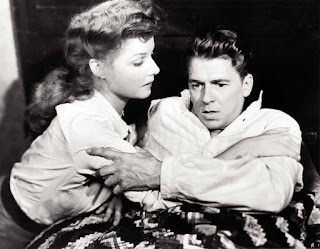 Watchingwell
Watchingwell
Curated classic films
Happy Families
My thoughts turn to family at this time of year. In this
season of family gatherings, I am reminded of some films where families are a necessary
background to the plot. Some of these are genuinely heartwarming. And then there are some -- well, you might want to think twice about spending the holidays with some of the
families in the following films.
Joy of Living (1938)
Directed by Tay Garnett
Irene Dunne is a successful star of Broadway musicals (she
even gets to display her lovely voice in some Jerome Kern tunes). Constantly working, her family demands don’t
allow for any relaxation. Enter Douglas
Fairbanks, a sea captain, who offers her an escape to the South Seas to
experience some joy. Irene must wrestle
with responsibilities to family versus her own needs. With Guy Kibbee Alice Brady,
Lucille Ball.
True to Life (
Directed by George Marshall
Franchot Tone and Dick Powell, radio writers for a show that
is losing in the ratings, look for a new angle.
A chance meeting between Powell and Mary Martin leads to Powell moving
in with her family and using their daily life as the subject of their radio
show. Things fall apart when Martin,
with whom Powell has fallen in love, finds out.
5th Avenue Girl (1939)
Directed by Gregory La Cava
An unhappy, wealthy businessman, Walter Connolly, and an unemployed
young woman, Ginger Rogers, meet in the park and devise a business arrangement where
she comes to live with him and poses as his mistress to shake things up among
his neglectful family members. And she does, indeed. With Veree Teasdale, James
Ellison, Tim Holt, Kathryn Adams.
The Young at Heart (1938)
Directed by Richard Wallace
A family of grifters, Billie Burke and Roland Young, and
their son and daughter, Douglas Fairbanks, Jr. and Janet Gaynor, on the run
from the law, see opportunity in a train wreck when they rescue an old woman who
invites them to live in her mansion. Alas, the woman is cash poor so they decide
to work themselves into her will to gain possession of her property. Meanwhile, they have to earn money and as
time passes, they become somewhat successful and with the help of love
interests, Paulette Goddard and Richard Carlson, develop a collective
conscience.
Bombshell (1933)
Directed by Victor Fleming
Jean Harlow basically plays a parody of herself and the
chaotic off-camera life of a Hollywood sex symbol.
Frank Morgan, the head of her dysfunctional family, is also her terrible
manager, Lee Tracy plays her outrageous press agent, Franchot Tone and Pat O’Brien
are possible suitors. Hilarious, rapid-fire, pre-code dialogue, good performances by all,
especially Tracy, but this is Harlow’s film.
You Were Never Lovelier (1942)
Directed by William A. Seiter
In Buenos Aires, Fred Astaire woos suitor-less Rita Hayworth,
oldest of four sisters, as a favor to her father, played by Adolphe Menjou, who insists on
marrying off daughters in chronological order.
(Sounds a little like The Taming of the Shrew, doesn’t it?) Mistaken identity
complications are punctuated by great tunes by Jerome Kern and of course, the
dancing.
Shadow of a Doubt (1943)
Directed by Alfred Hitchcock
Teresa Wright is excited when her favorite uncle, played by Joseph
Cotten, comes to visit the family, but starts to suspect that he may be the
serial, “Merry Widow” killer, and finds herself in danger when her uncle recognizes
that she knows. As with most Hitchcock films,
there is great tension that comes when the audience knows the truth before the
characters.
Four Daughters (1938)
Directed by Michael Curtiz
The story of Claude Rains, the four daughters he has raised, played by three Lane sisters, Priscilla, Lola, Rosemary, plus Gale Page, and their suitors, in their quiet, cultured family setting until rebel John Garfield, in his first film role, bursts on the scene, in his tough guy pose, and things are never the same.
You Can’t Take it With You (1938)
Directed by Frank Capra
Typical Edward Arnold role of ruthless industrialist and estranged son, James Stewart, who doesn’t understand why he shouldn’t marry Jean Arthur, granddaughter of the anarchistic Lionel Barrymore and daughter of dotty, Spring Byington, and a father, Samuel S. Hinds, who makes fireworks. A very Frank Capra ending with reconciliation and harmonicas.
Meet Me in St Louis (1944)
Directed by Vincente Minnelli
A year in the life of Judy Garland and her family in St.
Louis in 1903 awaiting the opening of the World’s Fair commemorating the 100th
anniversary of the Louisiana Purchase, when papa, Leon Ames, announces that the
firm is transferring him to New York.
Not only will all their social plans and budding romances be ruined, but
the family is crestfallen about missing the World’s Fair. Family solidarity saves the day. With Mary Astor,
Lucille Bremer, Margaret O’Brien.
The above are from the golden age. But I also recommend a modern family saga -- Avalon, from 1990, directed by Barry Levinson, the heartfelt story of four generations of an immigrant family in Baltimore.
Oh, and then there’s this family:
The
Godfather
(1972) Directed by Francis
Ford Coppola























































